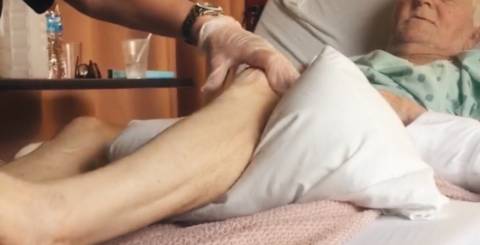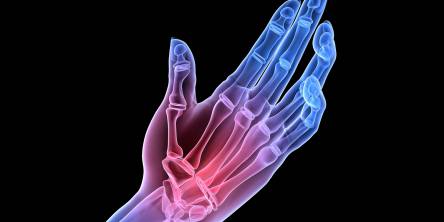Misconceptions About Inpatient Rehabilitation

Inpatient rehabilitation provides comprehensive and intensive inpatient rehabilitation and ongoing medical management to patients with functional impairments following disabling illnesses and injuries. Patients are most likely referred to these facilities by their doctors and oftentimes have hesitancy because of the many misconceptions about rehabilitation programs. Let's take a look at the misconceptions and help clarify the truths.
- Misconception 1-Patients can stay for many months.
The average length of stay is around two weeks. It all depends on your injury and what your rehabilitation plan is. This average includes patients who have had massive injuries such as strokes, severe traumatic brain injuries, and new spinal cord injuries. Those types of injuries usually involve a longer stay. A patient who has suffered from pneumonia or fracture may have a significantly shorter length of stay.
- Misconception 2- Patients will be 100% back to normal when they leave rehab.
Some patients may regain their full functional independence by the time they are discharged, but many do not. Many have to learn a new way of doing things in their day-to-day life. The rehabilitation teams work hard with each patient to develop goals that are based on the diagnosis and these goals continue after a patient is discharged.
- Misconception 3- Rehabilitation facilities don't accept admission on weekends or holidays.
This can be partly true. Some facilities do not while others do. This depends on staffing and the type of rehabilitation the facility offers. Many times referrals to a rehabilitation facility are planned in advance to avoid these types of issues.
- Misconception 4- It is cheaper to send someone to a rehabilitation center than to keep them in a medical or surgical unit.
All of these things are expensive. Providing one on one therapy daily is costly for each patient. Inpatient rehabilitation is cost-effective if the patient needs the rehabilitation and is expected to gain functionality from these therapies.
- Misconception 5- Medicare patients must have 3-day hospitalizations before transferring to an inpatient rehabilitation facility.
As a patient you must have qualifying hospitalization records of three or more days before your care in a facility is covered but this does not apply to inpatient rehabilitation, it applies to skilled nursing facilities. Patients can be admitted at any time once they are medically able to participate and benefit from the therapy programs.
- Misconception 6- Inpatient rehabilitation facilities are good places to send those with drug and alcohol problems.
Inpatient rehabilitation facilities are not drug and alcohol rehabs. The only reason a patient would be admitted with these problems would be if they have sustained an illness while intoxicated that gives them the need for additional therapies.
- Misconception 7- The right time to admit the patient for rehabilitation is always when the hospital team is ready to discharge them.
Most rehabilitation facilities go to great lengths to admit patients quickly. There are circumstances where a patient's ability or willingness to admit may not align with the plans of the discharging service.
- Misconception 8- Rehabilitation is a great place to complete medical work that was not completed while in the hospital.
All necessary medical work-up should always be done before transferring to rehab. The only reason this wouldn't be done is if something can wait and be done as an outpatient situation.
- Misconception 10- Inpatient rehabilitation is depressing for the patient.
One of the main focus points of rehabilitation hospitals is the mental health of the patient and the main approach to every aspect is to keep their spirits high. Rehab is where patients do to help improve their already improving conditions and help them regain their independence. This can be met with tears and times, but there is always someone there to uplift and inspire the patient as they are overcoming their obstacles to achieve their goals. Inpatient rehabilitation is one of the best resources for a patient in recovery. It provides comprehensive and intensive inpatient rehabilitation and ongoing medical management to patients with functional impairments following disabling illnesses and injuries.
Similar Articles
Veins on the skin that produce swelling may indicate varicose veins. Varicose veins are a vein disorder, and their role is to return blood from the leg to the heart. The specific cause of varicose veins, a prevalent condition, is unknown.
A healthy spine is the foundation of a functioning body. It supports your frame while allowing you to bend, flex, and move more freely. However, most people neglect the importance of spine health until they have a back condition.
Whether you're having trouble moving body parts or experiencing worsening joint discomfort, an orthopedic doctor can help. They can treat anything from a minor strain to complex treatments such as shoulder replacement. The appropriate treatment from an orthopedic expert at the right time might relieve your pain and improve your symptoms in less time.
When it comes to trauma, professionals in the mental health sector readily admit that no single style of therapy or intervention is appropriate for every case or individual.
Rheumatoid arthritis (RA) is a type of autoimmune disease that occurs when the body's immune system attacks the lining of joints, causing inflammation and causing symptoms like pain and stiffness. RA usually affects both sides of the body in a similar way, but small joints of the hands and feet are often affected first, often knuckle joints of the fingers.
An electroencephalogram (EEG) is a test that measures the electrical activity in the brain. Healthcare experts utilize it to evaluate and comprehend neurological illnesses, sleep disorders, and brain damage.
So, your back decided to stage a mutiny and gift you with a herniated disc. Lovely. Now what? If you’re imagining a future filled with endless discomfort and groaning every time you get out of bed, don’t fret. There are plenty of ways to tackle a herniated disc and get back to living your best, pain-free life.
Back pain – it’s not just a matter of “I lifted a heavy box, and now my back hurts.” It’s often the result of a complex dance between our minds and bodies, with stress, anxiety, and emotions playing lead roles. If you’ve ever woken up with a stiff back after a tough week or felt your spine twinge just from reading a long email chain, you’re not alone.
Chronic pain is a medical problem that affects many people around the world. Unlike acute pain, which is a short-term response of the body to tissue damage, chronic pain lasts longer, often without obvious physical damage. It can last from several months to several years, and its consequences can affect all aspects of a person's life









